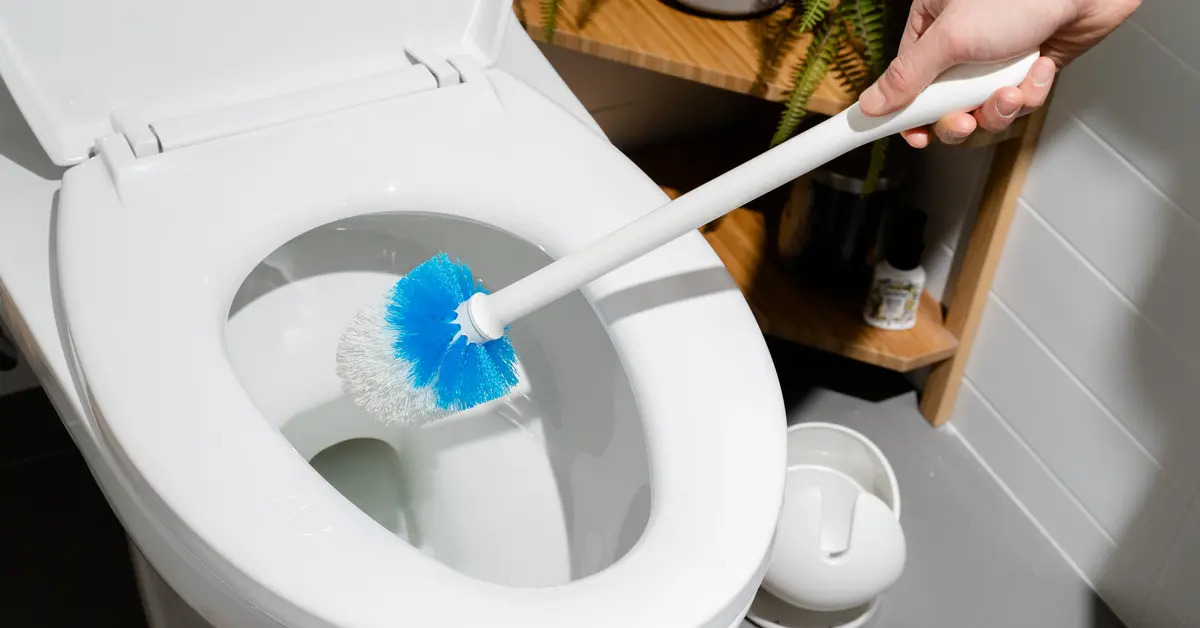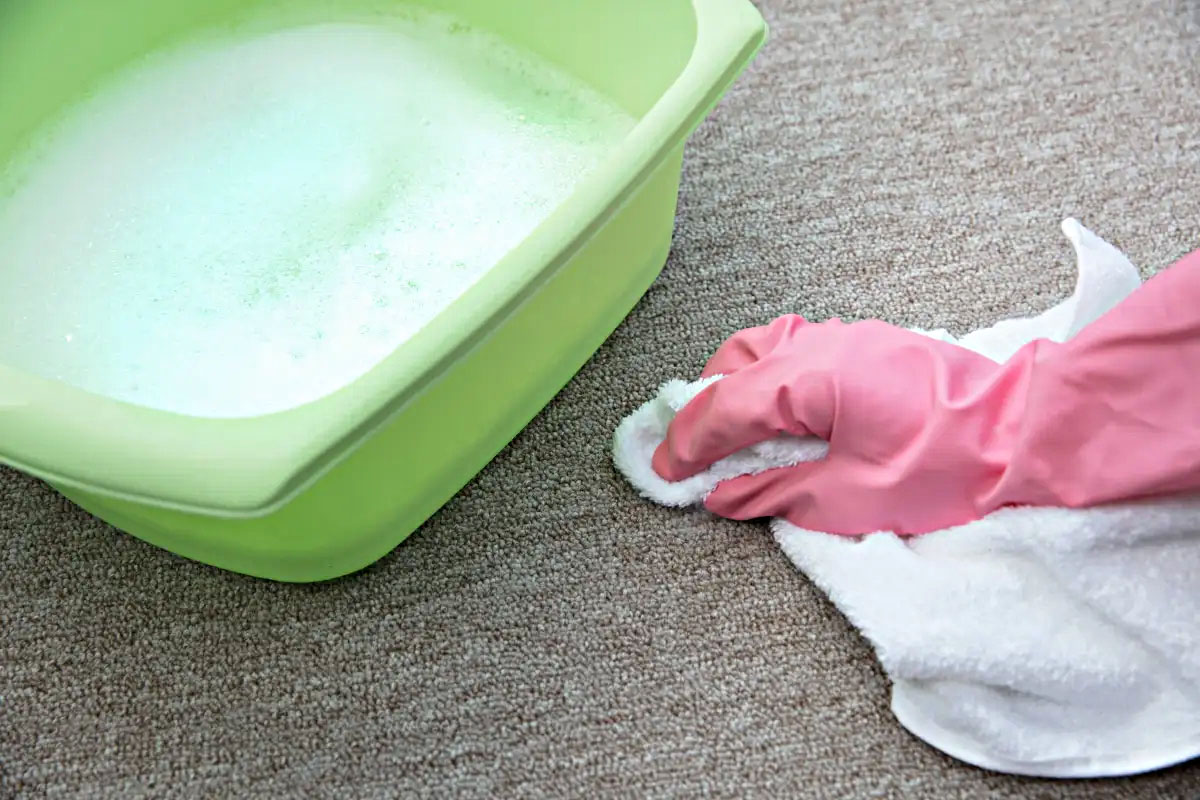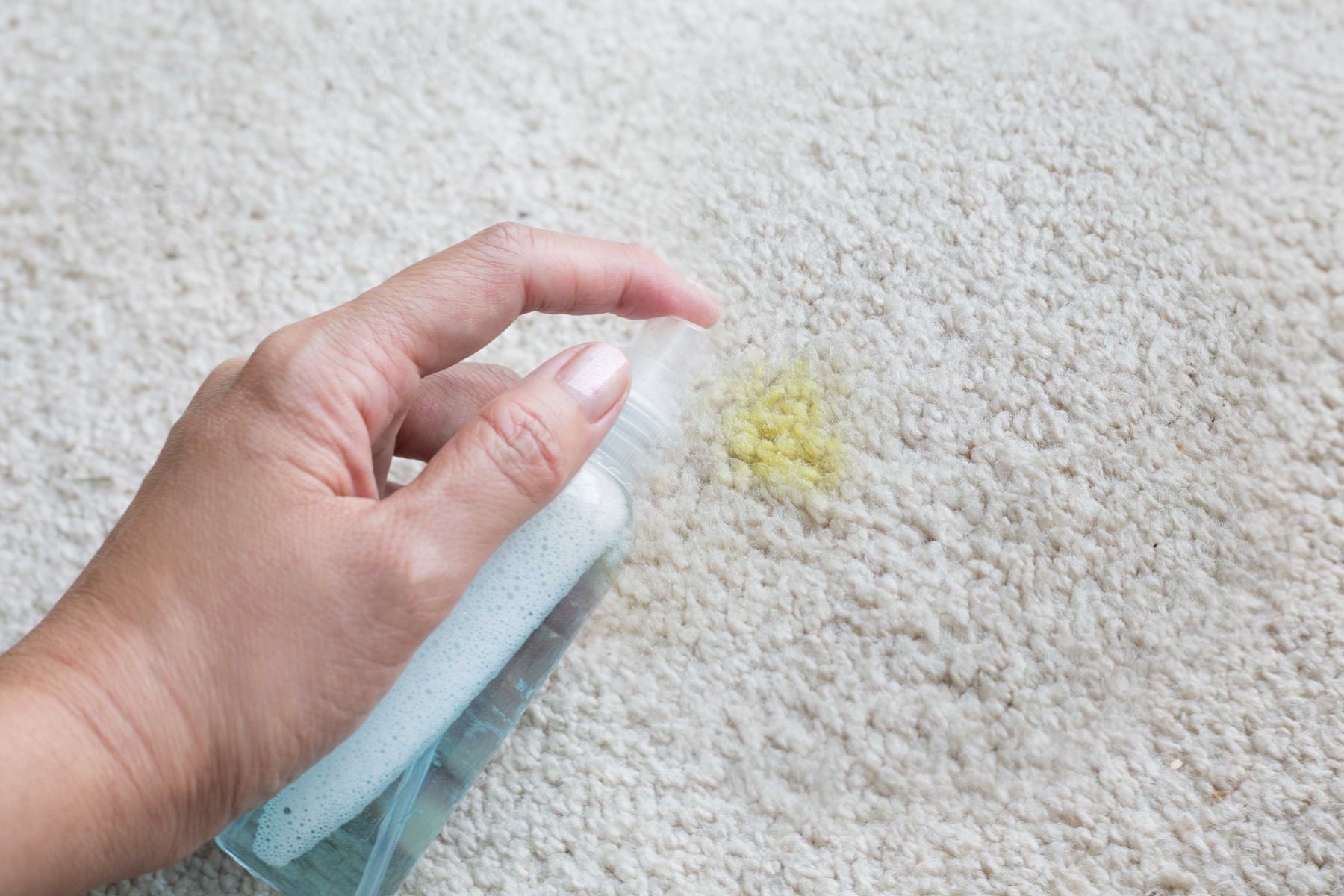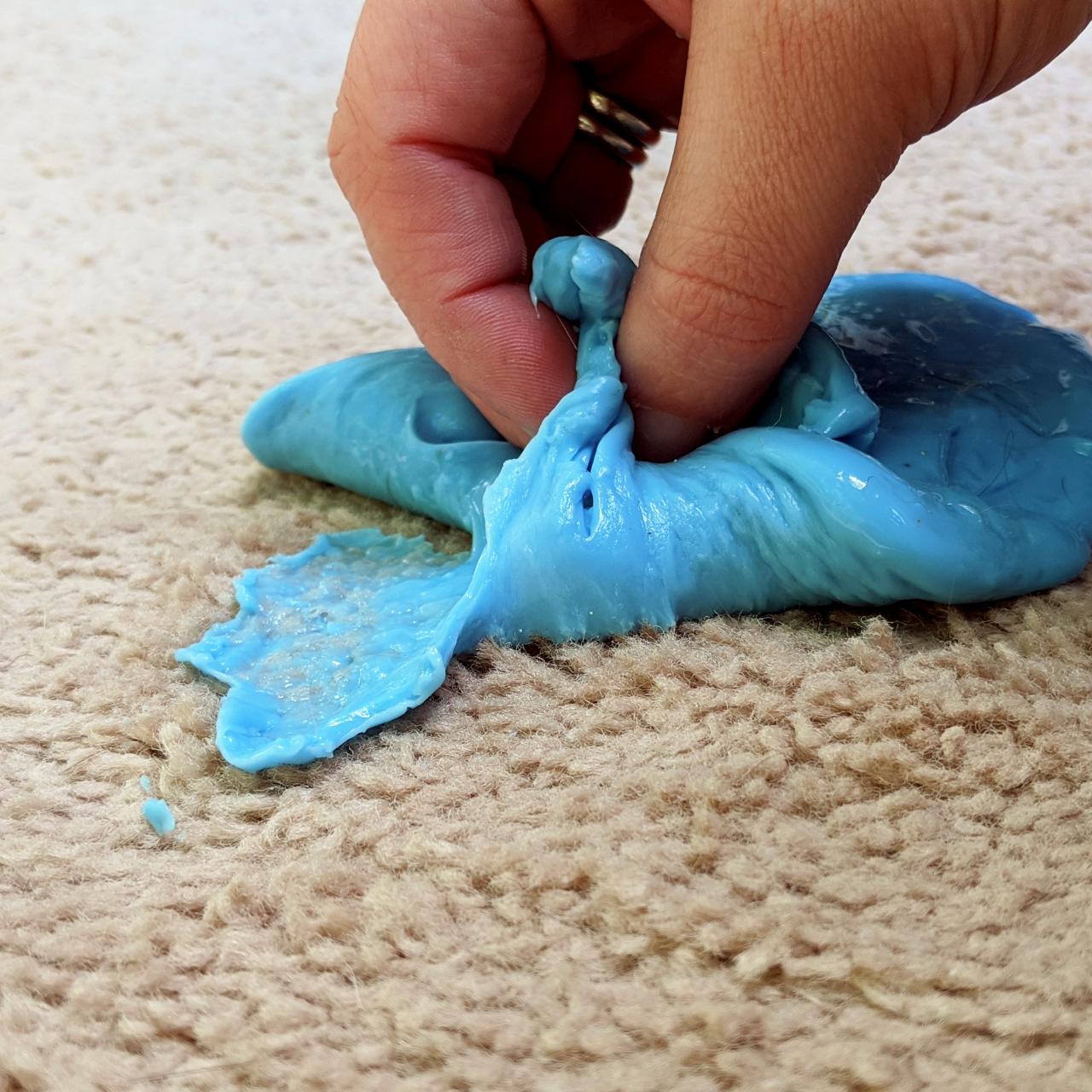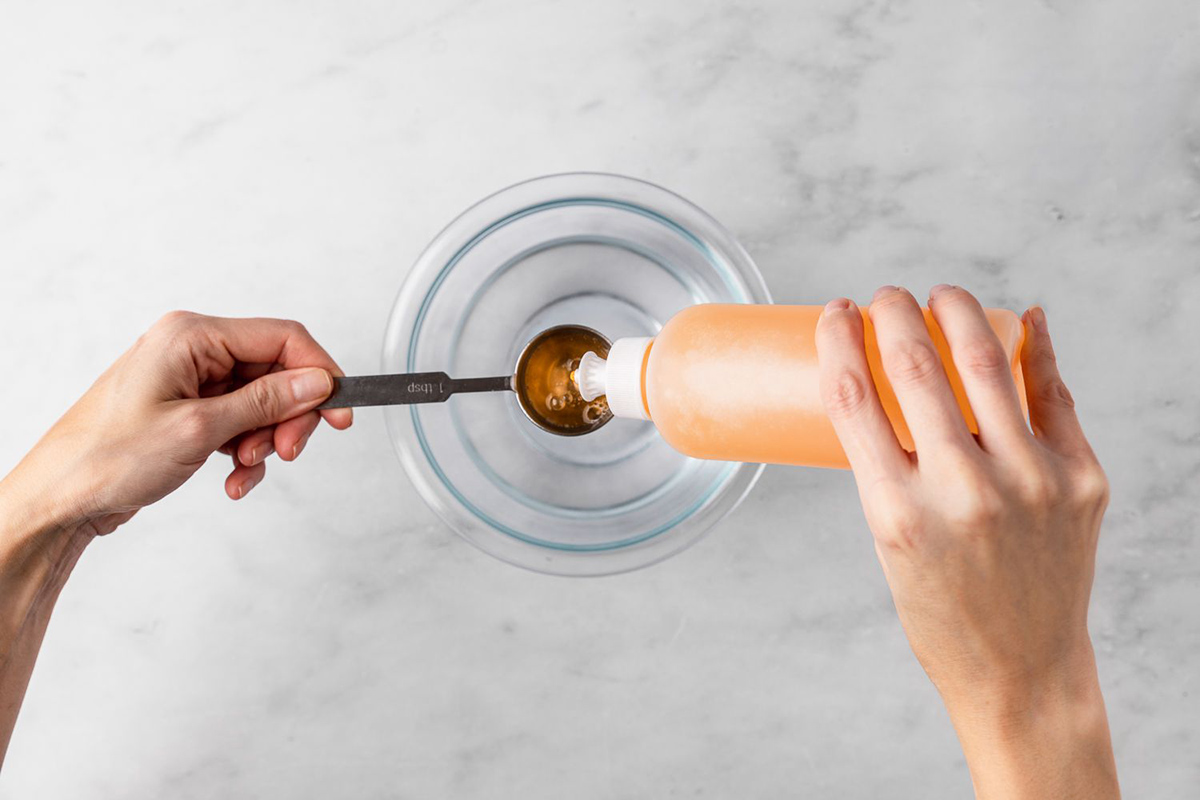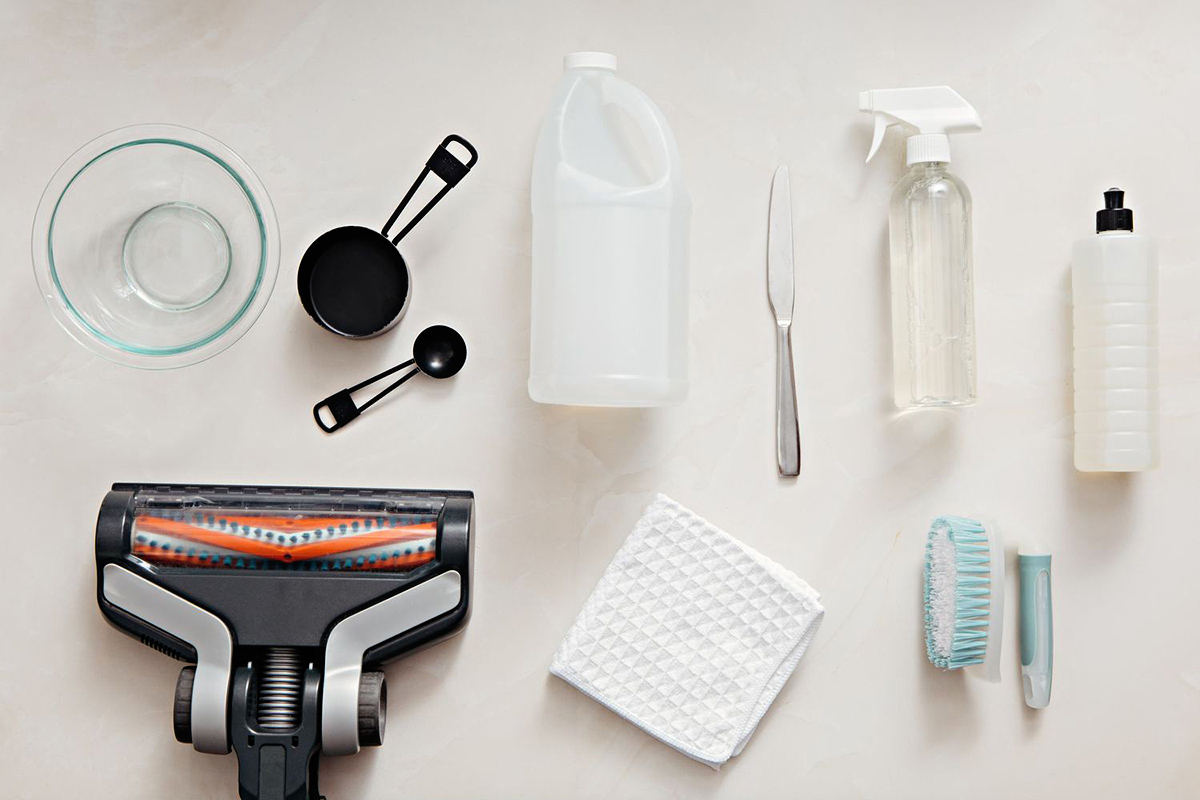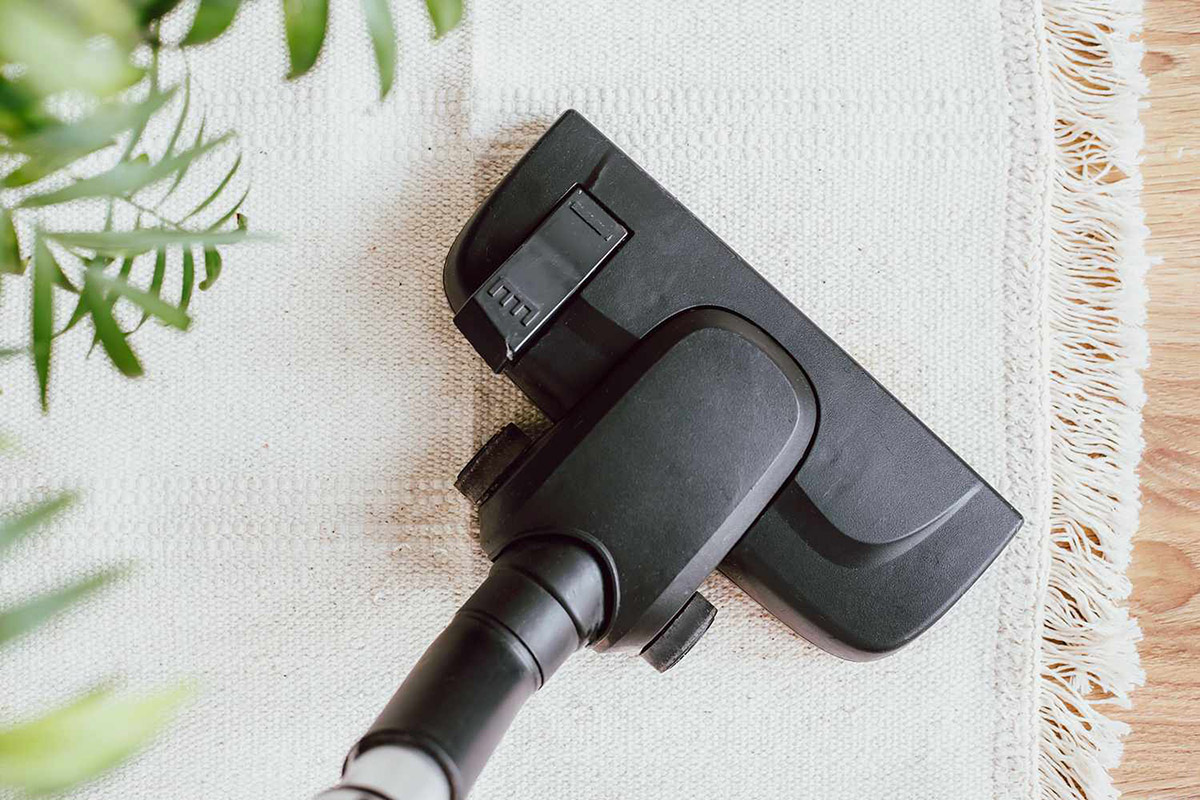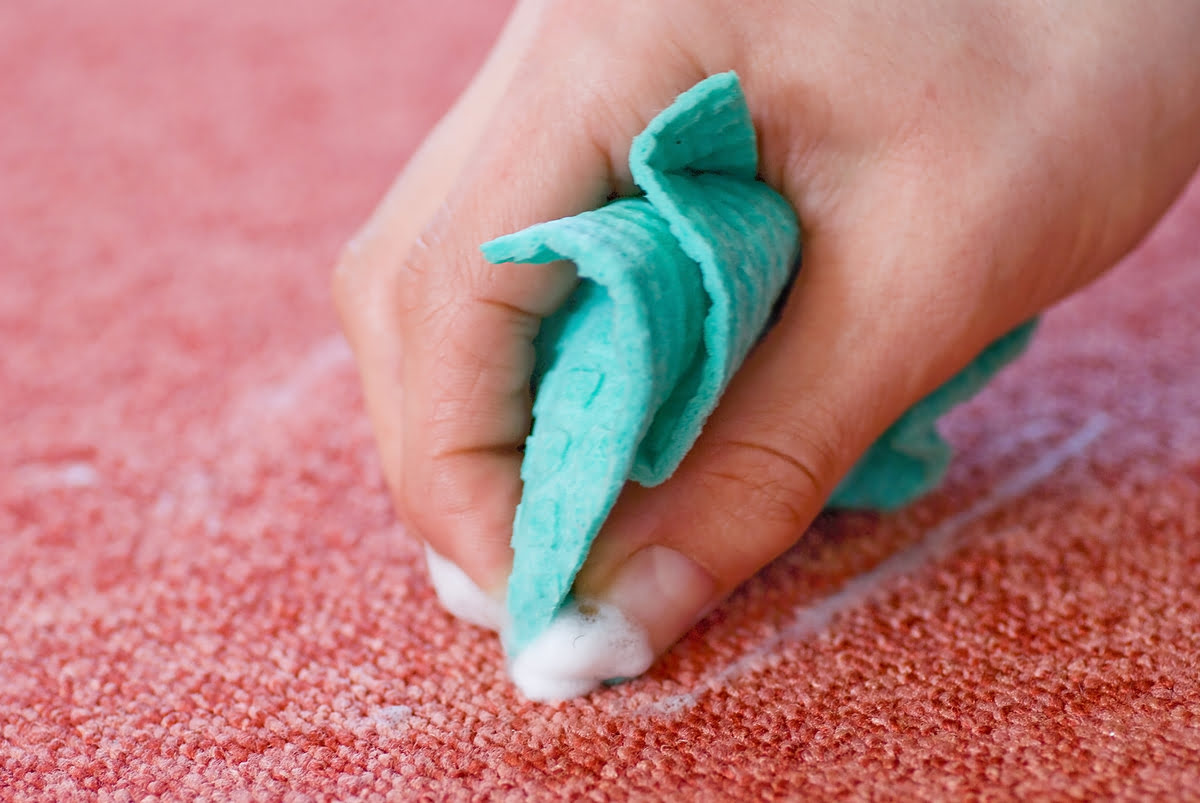

Articles
How Do You Get Pee Stains Out Of A Carpet
Modified: January 9, 2024
Learn effective techniques and solutions for removing stubborn pee stains from your carpet with our informative articles. Say goodbye to unsightly stains and hello to fresh, clean carpets.
(Many of the links in this article redirect to a specific reviewed product. Your purchase of these products through affiliate links helps to generate commission for Storables.com, at no extra cost. Learn more)
Introduction
Welcome to our guide on how to effectively remove pee stains from carpets. As a homeowner or pet owner, it’s all too common to deal with the frustrating task of cleaning up after accidents. Whether you have a mischievous pet or a potty training child, pee stains can be unsightly and leave behind unpleasant odors if not properly addressed.
But fear not! With the right techniques and a little bit of patience, you can effectively get pee stains out of your carpets and restore them to their former glory. In this article, we’ll walk you through the process step by step, from understanding the nature of pee stains to preventing future accidents.
Before we delve into the cleaning process, it’s essential to understand why pee stains can be particularly challenging to remove from carpets. The main reason is that urine contains uric acid, a compound that can bind to the carpet fibers and become difficult to lift, especially if the stain is old or has dried. Additionally, the ammonia present in urine can create an unpleasant odor that lingers in the carpet, even after the stain is removed.
That being said, it’s crucial to address the issue as soon as possible to minimize the damage and prevent the stain from spreading further into the carpet fibers. So, let’s dive into the step-by-step process of removing pee stains and restoring your carpets to their original condition.
Key Takeaways:
- Act swiftly to remove fresh pee stains by blotting, diluting with vinegar and water, and using baking soda to absorb odors. Vacuum thoroughly and repeat if necessary for best results.
- For dried/old pee stains, rehydrate with a mild dish soap solution, use an enzyme-based cleaner for pet urine, and thoroughly rinse the area. Address stubborn odors with baking soda, white vinegar, or seek professional help if needed.
Read more: How Do You Get Old Stains Out Of A Carpet
Understanding Pee Stains on Carpets
Before you can effectively remove pee stains from your carpets, it’s important to understand their composition and the potential damage they can cause. Pee stains can be more than just a cosmetic issue; they can also affect the structural integrity of your carpets if left unattended.
When urine comes into contact with carpets, it can seep deep into the fibers and even penetrate the underlying padding. If not promptly addressed, the urine can create an ideal breeding ground for bacteria and lead to the formation of mold and mildew, which can cause further damage and pose health risks.
Additionally, urine contains uric acid crystals that can cling to the carpet fibers, making the stain stubborn and harder to remove. If left untreated, these crystals can reabsorb moisture from the air, causing the stain to become reactivated and emit unpleasant odors.
The type of carpet you have can also affect the severity of the stain and the ease of removal. For example, carpets made of natural fibers like wool or silk may absorb urine more readily compared to synthetic carpets. Additionally, the color and age of the carpet can play a role in how visible the stain is and how challenging it is to remove.
Another factor to consider is the source of the pee stain. Whether it’s from a pet, a child, or an accidental spill, the composition of urine can vary, and some substances may be more challenging to clean than others. For example, pet urine can contain enzymes that break down into ammonia over time, leading to a stronger odor and potential discoloration of the carpet.
Now that you have a better understanding of the nature of pee stains on carpets, it’s time to prepare for the stain removal process. Remember, the sooner you start cleaning, the better chance you have of successfully removing the stain and preventing further damage.
Preparing for the Stain Removal Process
Before diving into the cleaning process, it’s important to gather the necessary supplies and prepare the affected area. Taking the time to prepare will ensure a smoother and more effective stain removal process. Here are the steps to follow:
Gather Your Supplies
Start by collecting all the necessary cleaning supplies. Here’s a list of items you’ll need:
- White absorbent towels or paper towels
- Baking soda
- White vinegar
- Mild dish soap
- Enzyme-based carpet cleaner (for pet urine stains)
- Clean, cold water
- A spray bottle
- A soft-bristle brush or a clean, white cloth
- A wet/dry vacuum cleaner
Blot the Stain
If the pee stain is fresh, start by blotting the area with a white absorbent towel or paper towel. Avoid rubbing the stain, as it can push the urine deeper into the carpet fibers.
Read more: How To Get Pee Out Of The Carpet
Move Furniture and Clear the Area
If the stain is located in an area with furniture, it’s best to remove the furniture temporarily to have unrestricted access to the stain. Clearing the area will allow you to work more efficiently and minimize the risk of spreading the stain to other parts of the carpet.
Ventilate the Area
Open windows or turn on fans to promote air circulation in the room. Proper ventilation will help eliminate any odors and speed up the drying process.
Test Cleaning Solutions
Before applying any cleaning solution to the stained area, it’s crucial to test it on a small, inconspicuous area of the carpet to check for colorfastness. Apply a small amount of the solution to the test spot, gently blot it, and wait for a few minutes. If there’s no discoloration or damage, it’s safe to proceed with the cleaning process.
With your supplies gathered and the area prepared, you’re now ready to tackle the pee stain on your carpet. In the next sections, we’ll cover how to remove fresh and dried/old pee stains, as well as how to deal with stubborn pee odors that may linger even after the stain is gone.
Removing Fresh Pee Stains
When it comes to fresh pee stains on carpets, the key is to act quickly to prevent the urine from soaking deeper into the fibers. Follow these steps to effectively remove fresh pee stains:
Read more: How To Clean Pee Stains Out Of A Carpet
Blot the Area
Start by blotting the fresh pee stain with a white absorbent towel or paper towel. Gently press down on the stain to soak up as much urine as possible. Avoid rubbing the area, as it can spread the stain and push it deeper into the carpet fibers.
Dilute the Stain
Next, mix a solution of 1 part white vinegar and 2 parts clean, cold water in a spray bottle. Spray the mixture directly onto the stained area, ensuring that it is thoroughly saturated. The vinegar helps to neutralize the odor and break down the urine crystals.
Blot with Baking Soda
Sprinkle a generous amount of baking soda over the vinegar-water mixture. Baking soda is highly effective in absorbing odors and can help lift the remaining urine from the carpet fibers. Gently press the baking soda into the stain using a soft-bristle brush or a clean, white cloth. Allow the baking soda to sit on the stain for at least 15 minutes.
Vacuum the Area
After the baking soda has had time to work its magic, use a wet/dry vacuum cleaner to thoroughly vacuum up the baking soda and any residue left from the stain. Vacuuming will help lift the remaining moisture and deodorize the carpet.
Inspect and Repeat if Necessary
Inspect the stained area to see if any traces of the pee stain or odor remain. If necessary, repeat the steps outlined above until the stain and odor are completely gone.
Remember, the sooner you tackle fresh pee stains, the higher the chances of complete removal. Act swiftly and follow these steps to ensure your carpet remains spotless and odor-free.
Removing Dried/Old Pee Stains
Dried or old pee stains on carpets can be more challenging to remove compared to fresh stains. The longer the urine has been sitting and drying in the carpet fibers, the deeper it can seep, making it harder to completely eliminate the stain and odor. However, with the right techniques, you can still effectively tackle dried/old pee stains. Follow these steps:
Rehydrate the Stain
Start by rehydrating the dried pee stain. Mix a solution of 1 part water and 1 part mild dish soap. Apply the solution generously to the stain, making sure it’s thoroughly saturated. Allow the solution to sit on the stain for about 10-15 minutes to rehydrate the dried urine.
Read more: How To Clean Pee Stains Out Of A Carpet
Blot the Area
After the stain has been rehydrated, blot the area with a white absorbent towel or paper towel. The goal is to absorb as much of the moisture and urine as possible from the carpet fibers. Continue blotting until no more urine transfers to the towel.
Read more: How To Get Human Pee Out Of A Carpet
Apply Enzyme-Based Cleaner
For pet urine stains, it’s highly recommended to use an enzyme-based carpet cleaner specifically designed to break down the uric acid crystals and eliminate the odor. Follow the instructions on the cleaner and apply it generously to the dried pee stain. Allow the cleaner to sit on the stain for the recommended amount of time to allow the enzymes to work.
Blot and Scrub the Area
After the enzyme cleaner has had time to work, blot the area again with a clean towel to remove any excess moisture. For stubborn stains, you can gently scrub the area using a soft-bristle brush or a clean, white cloth. Avoid using harsh scrubbing motions that could damage the carpet fibers.
Rinse the Area
To remove any residue left by the cleaning solution, rinse the area thoroughly with clean, cold water. Be sure to remove all traces of the cleaning solution to prevent any potential damage to the carpet fibers. Blot the area with a towel to remove excess moisture.
Dry and Evaluate
Allow the area to air dry completely. It’s important to ensure that the carpet is thoroughly dry to prevent the growth of mold and mildew. Once dry, inspect the area to see if any traces of the stain or odor remain. If necessary, repeat the steps outlined above until the stain and odor are completely gone.
Removing dried or old pee stains may require additional effort, but with patience and persistence, you can successfully restore your carpet to its original condition.
Read more: How To Get Cat Pee Out Of A Carpet
Dealing with Stubborn Pee Odors
Even after successfully removing the pee stain from your carpet, you may still be left with lingering odors. Urine contains ammonia, which can leave behind a strong and unpleasant smell. Don’t worry, though – there are effective ways to tackle stubborn pee odors and ensure your carpet smells fresh and clean. Follow these steps:
Apply Baking Soda
Baking soda is a powerful odor neutralizer and can help absorb the lingering smells from the carpet. After thoroughly cleaning the area, sprinkle a generous amount of baking soda over the entire affected area. Gently work the baking soda into the carpet fibers using a soft-bristle brush or your fingers. Allow the baking soda to sit on the carpet for several hours or even overnight, then vacuum it up thoroughly. The baking soda will absorb the odors, leaving your carpet smelling fresh.
Use White Vinegar
White vinegar is another effective natural deodorizer and can help neutralize the ammonia odors. Mix a solution of equal parts white vinegar and water in a spray bottle. Spray the mixture lightly over the previously stained area. Vinegar has a strong smell initially, but it will dissipate as it dries, taking the urine odor with it. Allow the vinegar solution to air dry completely.
Try a Commercial Odor Remover
If the odor persists even after using baking soda and vinegar, you may consider using a commercial odor remover specifically designed for carpets and upholstery. Look for products that contain enzymes or odor-neutralizing ingredients. Follow the instructions on the product and apply it to the affected area. Allow it to dry completely and vacuum the treated area. Be sure to choose a product that is safe for your specific type of carpet.
Read more: How Do You Get Dog Pee Out Of A Mattress
Consult a Professional
If you’ve tried various methods and the odor still lingers, it may be time to seek professional help. Carpet cleaning professionals have specialized equipment and cleaning solutions that can effectively treat stubborn odors. They can conduct a deep cleaning of your carpets, ensuring that all traces of urine and odor are eliminated.
If you’re dealing with pet urine odors, it’s also important to address any underlying behavioral or health issues with your pet. Consult with a veterinarian or a professional pet trainer to address any problems that may be contributing to the accidents. Proper training and medical intervention can help prevent future incidents and maintain a fresh-smelling carpet.
By following these steps and being persistent in your efforts, you can effectively conquer stubborn pee odors and enjoy a fresh-smelling home once again.
Preventing Future Pee Stains on Carpets
While accidents happen, there are proactive steps you can take to prevent future pee stains on your carpets. By implementing these preventative measures, you can maintain a clean and odor-free environment in your home. Here are some tips to help you prevent pee stains on your carpets:
Potty Training and Housebreaking
If you have young children or pets still undergoing potty training, it’s important to establish consistent routines and reinforce good bathroom habits. Provide regular bathroom breaks and positive reinforcement for using the designated area. Properly housebreaking your pet or potty training your child will significantly reduce the chances of accidents on your carpets.
Supervise and Restrict Access
When you can’t directly supervise your pet or child, it’s best to restrict access to carpeted areas. Create designated play areas or utilize baby gates to keep your furry friends or little ones away from carpeted rooms. This will minimize the chances of accidents occurring on the carpets.
Read more: How Do You Get Cat Pee Out Of A Mattress
Use Protective Measures
If you anticipate accidents or are in the process of training, consider using protective measures to safeguard your carpets. Training pads, pet diapers, or child-proof covers can help protect your carpets from potential pee stains. These aids can be especially helpful during the initial stages of training when accidents are more likely to occur.
Clean Accidents Immediately
If accidents do happen, it’s crucial to clean them up promptly. Quickly remove any solid waste and blot the area with a white absorbent towel or paper towel to soak up the urine. Follow the appropriate cleaning steps outlined in this guide to effectively remove the stain and odor. The sooner you address the accident, the easier it will be to prevent permanent staining and odor.
Use Pet Training Aids
If you have pets, you can utilize training aids like pheromone sprays or attractant sprays to encourage them to use designated areas instead of your carpets. These products can help redirect their natural instincts and prevent accidents on your carpets.
Regularly Clean and Maintain Carpets
Keeping your carpets clean and well-maintained can also play a role in preventing pee stains. Regular vacuuming can help remove dirt and debris that can attract pets to urinate on the carpet. Additionally, periodic professional deep cleaning can help eliminate any lingering odors and keep your carpets fresh and stain-free.
Read more: How Do You Get Oil Out Of A Carpet
Address Underlying Issues
If your pet continues to have accidents or your child experiences persistent bedwetting, it’s essential to address any underlying issues that may be contributing to the problem. Consult with a veterinarian or a medical professional for your child to rule out any health concerns and seek appropriate treatment.
By following these prevention strategies, you can minimize the occurrence of pee stains on your carpets and maintain a clean and fresh living environment. Remember, prevention is key in maintaining the beauty and longevity of your carpets.
Conclusion
Dealing with pee stains on carpets can be a frustrating task, but with the right techniques and preventive measures, you can effectively remove stains and keep your carpets looking and smelling fresh. It’s important to act quickly when accidents happen, as the longer urine sits in the carpet fibers, the more challenging it becomes to remove the stain and odor.
Understanding the nature of pee stains and their potential damage is crucial in implementing the appropriate cleaning techniques. Whether you’re dealing with fresh stains or tackling dried/old ones, the step-by-step processes outlined in this guide provide effective solutions to remove stains and restore your carpets to their former condition.
Furthermore, addressing stubborn pee odors is essential to eliminate any lingering smells that can permeate your home. With the use of natural ingredients like baking soda and white vinegar, as well as commercial odor removers, you can successfully neutralize the odors and enjoy a fresh-smelling environment.
Prevention is always better than cure, and taking proactive measures to prevent future pee stains on your carpets is key. From potty training and housebreaking to using protective measures and properly maintaining your carpets, incorporating these preventive strategies will help minimize accidents and preserve the cleanliness and longevity of your carpets.
Remember, accidents happen, but by implementing the tips and techniques outlined in this guide, you can confidently handle pee stains on carpets and maintain a clean, fresh, and odor-free living space for you, your family, and your furry friends.
So, roll up your sleeves, gather your cleaning supplies, and get ready to tackle those pee stains head-on. Your carpets will thank you!
Frequently Asked Questions about How Do You Get Pee Stains Out Of A Carpet
Was this page helpful?
At Storables.com, we guarantee accurate and reliable information. Our content, validated by Expert Board Contributors, is crafted following stringent Editorial Policies. We're committed to providing you with well-researched, expert-backed insights for all your informational needs.
